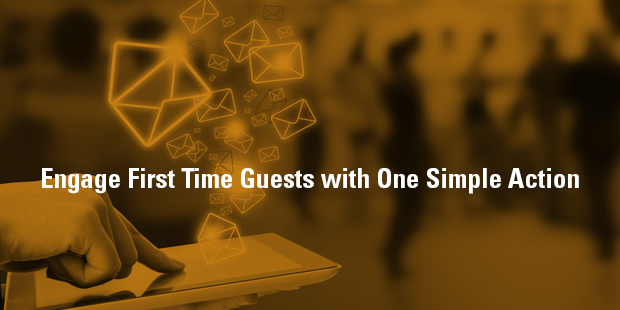
Engage First Time Guests with One Simple Action
Email is one of the easiest ways to initiate a connection with first-time guests to your church. However, many churches either fail to use it or fail to maximize its capabilities if they do.
Here are seven tips to maximize your church’s use of email to follow up with first-time guests.
- Send a welcome email within 24 hours. Timing is important. I’m not advocating that the first time guest should still be in the parking lot when the email hits their inbox. But if they visit on the weekend, an email before lunch on Monday would be best. This shows the guest that they are a priority to the church.
- Send all your welcome emails from a generic church address that uses the name of the church. I recently received a welcome email from a church I visited—but I missed it because it came from a staff member I didn’t know. His name showed up, but since I didn’t recognize the name of the sender, I thought it was spam at first. Had the sender name been the name of the church, I would have recognized it immediately.
- Use an engaging subject line. Try to stay away from generic subject lines like “Thanks” or “Thanks for visiting” if possible. Use something more engaging or personal like “We are so glad you visited _____ Church yesterday” or “It was good to see you at _____ Church this weekend.” Just be careful about the length. Anything over 65 characters might get truncated in smart phone notifications and apps. Make your email stand out so that the guest feels compelled to open it.
- A template is ok, but be sure to include relevant information. You can send the same email to everyone who visited if you’d like. However, include only relevant information to guests. They don’t need a full event schedule or small group directory in the body of the email—include links to those instead. And for those of you who opt to use a mass email for all guests: use either an email program like MailChimp or ConvertKit or use the Bcc: function. Do not include everyone who visited in the To: or CC: fields. One final note, if you can personalize the email to the individual guest based on their family’s make-up, that’s always best. I realize you may not have enough information for that, but if you do, take the time and make the effort. It will likely pay off.
- Prompt the guest for a follow-up action. In the body of the email, offer action steps for the guest to take. Prompt them to find out more about specific ministries or next steps classes. By providing information and opportunities for engagement on the front end, you’re more likely to retain those guests.
- Use email sequences if the guest take action. This is where using a service like MailChimp or ConvertKit can really pay off. You can set up email sequences with information about certain ministries, which trigger when the guest clicks on a link in the initial email. These sequences shouldn’t be overwhelming or pressure-packed. But they can be highly informative and engaging for the guest when done correctly.
- If possible, check your future records for a second visit. Want to know if things are working? Create a way to measure your return rate and retention rate of guests. If a guest has kids who are checked into childcare, this is an easy metric to track. If they are adults attending worship service only, it’s a bit more difficult. For those, you’d need to track membership class or small group attendance records.
Should email be the only way to follow up with guests? Probably not. Personal contacts always are better than electronic ones, but email can be a starting point for your church to use to get first-time guests engaged to a point where the pastor, staff, or lay leaders can meet with them personally.
Does your church use email to contact first-time guests? If so, do you have an email service you use?

Tags: Church Guest Experiences, First time Guests, Guest Experience, Guest email, Jonathan Howe











